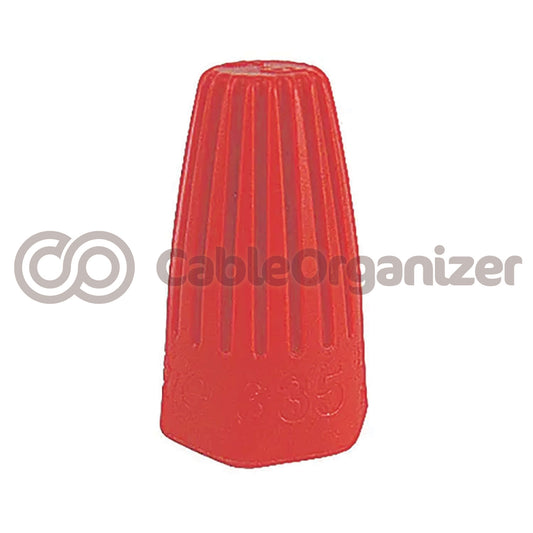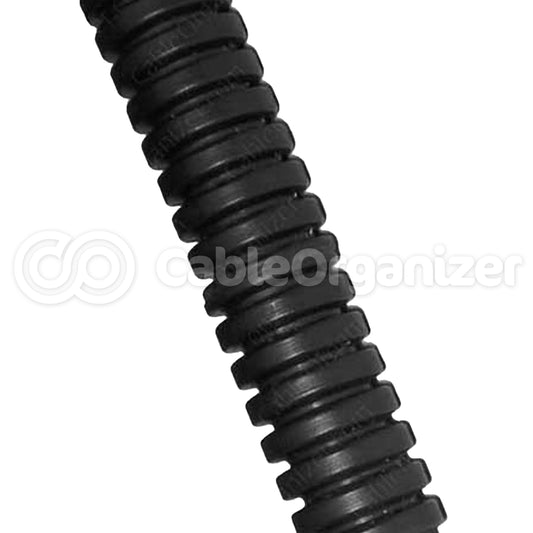The Facts on Polypropylene
By: CableOrganizer®
WHAT IS POLYPROPYLENE?

Polypropylene is an incredibly versatile thermoplastic polymer. Though many chemists began experimenting with it dating to the early 1870s, after chemists J. Paul Hogan and Robert L. Banks of Phillips Petroleum observed propylene morph into a crystalline like a white taffy in 1951, Phillips Petroleum patented it in 1953. Polypropylene continues to be manufactured around the world since early scientists made their own discoveries about it during the 1950s, including Giulio Natta in Italy and in Germany Karl Rehn and Karl Ziegler. There were numerous chemists in the United States as well, including Alexander Zletz, Arthur Anderson, Ivan Robinson, Edwin Vandenberg and Samuel Lippincott. It has since become an indispensable material to virtually every field or industry you can imagine, ranging from household goods and consumer packaging to medical technology and the military.
WHAT ARE POLYPROPYLENE’S PHYSICAL PROPERTIES?
Polypropylene is known for being both lightweight and extremely rugged, but can have different textures, or “tacticities” (the singular is “tacticity,” meaning how the macromolecule is arranged). That depends on which polymerization process is used to create it. Isotactic polypropylene is formulated with all methyl group atoms attached to one side of its atomic chain, which creates a rigid polymer. On the other end of the spectrum, you’ll find rubbery-textured atactic polypropylene. Its elastomeric qualities come from the methyl group atoms located on both sides of its atomic chain.
Polypropylene, which can be used as either a molded plastic or a fiber, doesn’t absorb water and can tolerate higher temperatures (up to 160°C, or 320°F) without melting. Although polypropylene can easily be manufactured in a wide variety of colors, the material is completely clear when it’s biaxially oriented (biaxially oriented polypropylene is also known as BOPP).
Because polypropylene is highly fatigue-resistant and can stand up to continuous flexing, it’s used to make most of the “living hinges” you’ll find on the market (think flip-top plastic caps on ketchup bottles, shampoo and toothpaste or the snap-open lids on candy dispensers). Polypropylene is very resistant to acids, bases, and other harsh chemical solvents. Since it’s also nonconductive, it can often be used as a dielectric.
WHAT TYPES OF PRODUCTS ARE MADE OF POLYPROPYLENE?
Given its versatility and outstanding performance, polypropylene appears as a mind-boggling array of products that span just about every industry or field of interest imaginable. Here are just a few examples of the polypropylene-based products that are available today:
- Medical Supplies and Surgical Components: Polypropylene can endure the high temperatures of an autoclave, so it’s often used to make medical instruments and supplies that need to stand up to heat sterilization. And because it’s non-absorbable and rarely rejected by the human body, polypropylene is also used in some surgical sutures. It is the material of choice for hernia repair and prevention patches.
- Athletic Apparel and Military Cold-Weather Gear: When spun into fiber form and used as a clothing material, polypropylene excels when it comes to extreme temperatures. With its superior wicking ability, polypropylene spares athletes in warm climates from the discomfort of perspiration-soaked clothing. At the same time, it can insulate and regulate the body temperatures of military personnel and outdoor sportsmen who require protection against cold weather.
- Low Smoke Zero Halogen Cabling: Polypropylene-covered cables are used in tunnels and the air-handling spaces of buildings to reduce the risk of toxic fumes should fire ever occur. Unlike polyvinyl chloride (PVC), the type of plastic that insulates most non-plenum cabling, polypropylene produces very little smoke and doesn’t release dangerous halogens as it burns, so it’s classified as “low smoke zero halogen.”

*Helpful Hint: An easy way to tell if something is made of polypropylene is to look for its resin identification code, which looks like this.
CableOrganizer® carries a wide variety of polypropylene-based cable management products, including:


